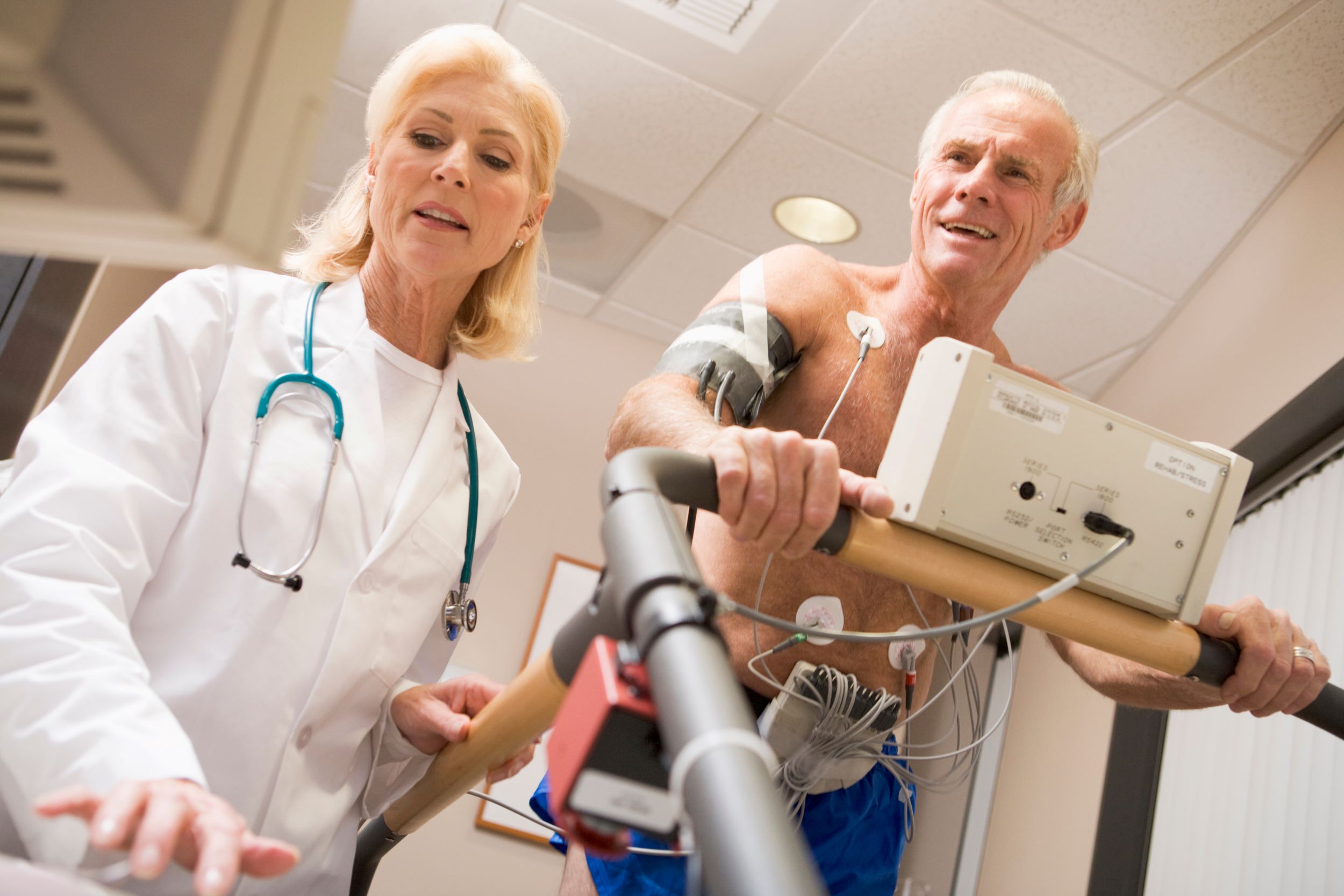Welcome to the journey of understanding why is running healthy for you. Running, a simple yet profoundly beneficial form of exercise, has been embraced by millions worldwide for its far-reaching health advantages. It’s an activity that requires no special equipment and can be done almost anywhere, making it one of the most accessible ways to enhance overall well-being. Whether you’re a seasoned marathoner or someone lacing up their sneakers for the first time, the health benefits of running can positively impact your life.
From bolstering your cardiovascular fitness to strengthening your muscles, running offers a holistic approach to improving physical health. Moreover, it’s not just about the body; the mental health benefits of this activity are just as significant. As you embark on this guide to discover the multifaceted health advantages of running, remember that each step you take is a stride towards a healthier, more fulfilled version of yourself.
Visit our website to learn more and get started today! Click here.
Running for a Stronger Cardiovascular System

Running is a powerhouse when it comes to strengthening the cardiovascular system. With each run, you are doing far more than just burning calories; you are enhancing the efficiency of your heart and lungs. Consistent running increases the heart’s stroke volume, which is the amount of blood pumped with each beat, and it also helps in reducing resting heart rate. These adaptations are crucial for reducing the risk of heart diseases, including hypertension and stroke.
The benefits extend to the microscopic level, where running can improve the elasticity of arteries, thus promoting better blood flow. Moreover, it boosts the levels of high-density lipoprotein (HDL) cholesterol, the ‘good’ cholesterol, and lowers levels of low-density lipoprotein (LDL), the ‘bad’ cholesterol. This balance is essential for maintaining a healthy lipid profile and preventing atherosclerosis.
Additionally, running can help regulate blood pressure and improve overall cardiac function. It is not an overstatement to say that running can be just as effective, if not more so, than medication for some individuals with high blood pressure. The sheer act of pushing your cardiovascular system on a regular basis is a natural way to keep it functioning at its best.
For those concerned about the impact of running on the joints, studies have shown that with proper technique and training, the benefits for your heart far outweigh the risks. In fact, runners often have a lower incidence of osteoarthritis compared to inactive individuals, thanks to the improved circulation and joint health that comes with regular running.
Weight Management and Calorie Burning Through Running

Running stands out as an exceptionally effective way to manage weight and burn calories. The high-intensity nature of running means that it not only burns a significant number of calories during the activity itself but also elevates the metabolism for hours after you’ve finished. This afterburn effect, known scientifically as excess post-exercise oxygen consumption (EPOC), means you’re getting more bang for your buck with every stride.
Furthermore, running can be a key player in achieving a caloric deficit, which is the cornerstone of weight loss. It is estimated that an average-sized person burns approximately 100 calories per mile when running, making it one of the most efficient exercises in terms of energy expenditure. This is particularly beneficial for those aiming to lose weight without spending excessive hours at the gym.
Engaging in regular running can also help in preserving lean muscle mass while shedding unwanted fat. This is critical because muscle tissue burns more calories at rest compared to fat tissue, thereby contributing to a more robust metabolism. By incorporating running into a balanced fitness routine, individuals can sculpt a leaner physique while bolstering their metabolic rate.
It’s important to note, however, that weight management is a multifaceted endeavor. While running is a powerful tool for calorie burning, it should be complemented with a nutritious diet and strength training exercises to maximize results. The combination of these elements makes for a sustainable approach to weight management that can lead to long-term success.
Mental Health and Emotional Well-Being from Regular Running

The mental health benefits of regular running are just as compelling as the physical ones. Engaging in this aerobic exercise has been shown to release endorphins, often referred to as ‘runner’s high,’ which are chemicals in the brain that act as natural painkillers and mood elevators. This euphoric sensation can lead to a significant boost in one’s overall sense of well-being.
Running also serves as a powerful stress reliever. The rhythmic, repetitive motion provides a form of moving meditation, helping to clear the mind and reduce the day-to-day stresses that can accumulate. It encourages mindfulness and can help in breaking the cycle of negative thoughts that often feed anxiety and depression.
Moreover, the structure and routine that regular running provides can be incredibly beneficial for mental health. Setting and achieving goals, whether it’s running a certain distance or simply maintaining consistency, can improve self-esteem and provide a sense of accomplishment. The discipline required to stick to a running schedule can transfer to other areas of life, promoting a more organized and proactive mindset.
Running also offers social benefits that contribute to emotional well-being. Joining a running club or participating in group runs can alleviate feelings of loneliness and provide a supportive community. This social aspect not only makes running more enjoyable but also reinforces a sense of belonging and shared purpose.
It’s clear that the mental and emotional benefits of running are substantial. From improving mood and reducing stress to enhancing self-confidence and fostering social connections, regular running can play a pivotal role in maintaining a healthy and balanced mental state.
Running’s Role in Building Musculoskeletal Strength
Running’s role in building musculoskeletal strength extends beyond mere endurance. It is a weight-bearing exercise, which means it helps build stronger bones along with muscle strength. When one runs, the body adapts to the increased load being placed on the skeletal system, leading to denser, stronger bones. This adaptation is critical in reducing the risk of osteoporosis and fractures as one ages.
The muscles also reap significant benefits from regular running. The engagement of the lower body muscles, including the quadriceps, hamstrings, glutes, and calves, leads to enhanced muscular endurance and tone. Over time, runners often experience improvements in muscle definition and strength, which can contribute to better stability and balance, reducing the risk of falls and injuries.
Moreover, the core muscles, which are essential for maintaining good posture and stability during running, also become stronger. A strong core is crucial for overall strength and can help in performing everyday activities with greater ease. Additionally, the continuous impact of feet hitting the ground stimulates the production of cells that rebuild bone, which is beneficial for long-term skeletal health.
It is important to note, however, that while running contributes to musculoskeletal strength, it should be complemented with resistance training for a well-rounded fitness regimen. Incorporating exercises such as squats, lunges, and weightlifting can enhance the strength gains from running and help prevent overuse injuries that may result from repetitive motion.
Running, therefore, plays a dual role in enhancing musculoskeletal health by not only strengthening the muscles but also contributing to stronger bones. As such, it is an invaluable component of a comprehensive approach to physical health and strength.
Longevity and Disease Prevention Through Consistent Running

Embracing the habit of running can be a game-changer for those looking to extend their lifespan and ward off diseases. Consistent running has been linked to a lower risk of mortality from all causes, according to numerous studies. This form of aerobic exercise is beneficial for maintaining a healthy heart, as it improves cardiovascular efficiency and reduces blood pressure. Runners often exhibit lower resting heart rates, which is an indicator of a strong, efficient heart.
Moreover, running plays a significant role in disease prevention. It helps regulate blood sugar levels, reducing the risk of type 2 diabetes. Running also facilitates better weight management, which is a critical factor in preventing obesity-related conditions such as heart disease, stroke, and certain types of cancer. The mental health benefits also contribute to longevity, as running is known to reduce stress, anxiety, and depression, factors that can negatively impact overall health and lifespan.
It’s important to note that the longevity benefits of running can be experienced with even moderate amounts of running. You don’t have to be a marathon runner to reap the rewards; incorporating 30 minutes of running into your routine a few times a week can make a significant difference.
As part of our commitment to your health and fitness journey, Run Just For Fun encourages you to lace up your running shoes and hit the pavement or trails. Whether you’re aiming to boost your health, prevent disease, or simply enjoy the outdoors, running is a simple yet powerful tool at your disposal. Visit our website to learn more and get started today! Click here.
Remember, every mile you run is a step towards a healthier, longer life. With Run Just For Fun, you’ll find tailored workouts and a vibrant community to support you every step of the way. Let’s embark on this lifelong journey towards fitness freedom together.


